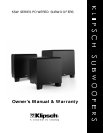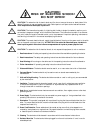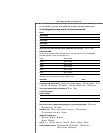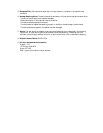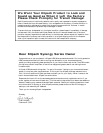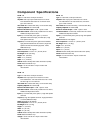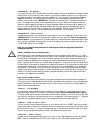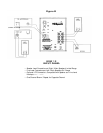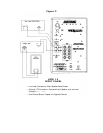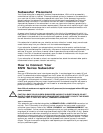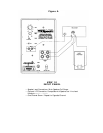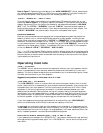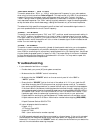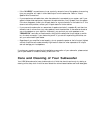
Subwoofer Placement
Your Klipsch subwoofer is designed to operate at frequencies below 120Hz, which are essentially
omnidirectional (difficult to localize). There may be several options for placement of the subwoofer in
your room that will effect its frequency response and output level. Corner placement improves the
acoustic loading of the subwoofer, increasing its output and dynamic range capabilities. Placing the
subwoofer away from walls or in the center of the room will result in the least amount of output.
Asymmetrical placement of two subwoofers in a room may improve low frequency reproduction by
providing a smoother and more consistent response pattern. Since even minor repositioning will result
in an audible performance change due to room acoustics, Klipsch recommends experimentation with
the subwoofer placement in the room.
A general rule of thumb is to place your subwoofer in the vicinity of the speakers with which it is
being paired. For example, a subwoofer reproducing front channel bass will generally perform better
when placed in the same end of the room as the main speakers. As well, a subwoofer connected to
the rear channels of a surround system performs best when positioned in the rear of the room.
If the subwoofer is installed near your television and color distortion is noted, simply move the sub-
woofer farther away from your television until the interference disappears.
If your subwoofer is placed in an enclosed cabinet, provisions must be made to ventilate the heat
radiated by the enclosed amplifier. Additionally, since some of the acoustic output is generated by the
sub’s rear firing port, a minimum of several inches of space should be provided around the sub-
woofer. If the front of the cabinet is acoustically open, the back of the subwoofer, with the port and
amplifier controls, should be oriented in this direction.
If your subwoofer will be used on a hard, non-carpeted surface, attach the enclosed rubber pads to
the subwoofer’s feet to prevent vibration and marring.
How to Connect Your
KSW Series Subwoofer
AC Power
Since your KSW subwoofer has an internal power amplifier, it must be plugged into a nearby AC wall
outlet. The subwoofer should be unplugged from the AC power with the power switch in the OFF posi-
tion during hookup and installation. To eliminate a tripping hazard, all connections should be
unplugged from the back panel of the subwoofer if it is being moved. Avoid extremely long extension
cords of small gauge since they may impair the performance of the subwoofer amplifier and present a
potential fire hazard. If the subwoofer will not be used for an extended period of time, unplug the
power cord from the AC power outlet.
Note: 230 volt models are not supplied with an AC power cord, but are equipped with an IEC-type
power cord socket.
CAUTION: SINCE YOUR KLIPSCH SUBWOOFER HAS BUILT-IN ELECTRONICS, DO NOT
PLACE IT NEAR SOURCES OF HEAT OR MOISTURE! TAKE CARE TO ROUTE THE POWER
CORD SO THAT IT WILL NOT BE CUT, DAMAGED OR PINCHED.
Types of Connections
Your subwoofer may be installed using either the SPEAKER LEVEL or LINE LEVEL connection, but
not both. The LFE connection is an optional line level connection that can be used in conjunction
with either type of hookup. Refer to the “LFE IN / BYPASS IN” and “BASS MANAGEMENT” sec-
tions for more detail. You can connect the subwoofer so that your main speakers will reproduce a full
range signal (all models) or a limited range (bass filtered) signal (KSW 12 and KSW 15 only). Speaker
level connections are used when connecting to a receiver or integrated amplifier that lacks line level
subwoofer or pre-amp output jacks. Line level connections are often the best choice when connecting
the subwoofer to a system comprised of a separate pre-amp/processor and power amplifier. This also
applies to any receiver or integrated amplifier that possesses main channel pre-amp or subwoofer
outputs. The type of connection configuration used depends upon the capabilities of your equipment
and your performance goals.
!




